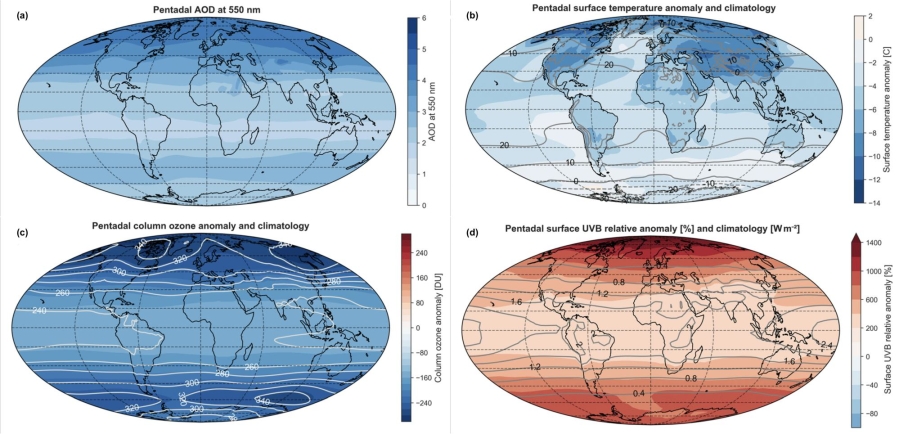The PhD defence and trial lecture will be held in Auditorium 1, The Geology Building. In some cases, it will be possible to attend the trial lecture and dissertation digitally, in that case a link to Zoom will be posted.
Trial lecture
Wednesday 27 April, 14:15-15:00, Aud 1, The Geology Building / Zoom:
Marine cloud brightening for climate intervention
Conferral summary (in Norwegian)
Eksplosive vulkanutbrudd har så stor kraft at de kan sende store mengder gasser opp i stratosfæren, som ligger 10-50 km over bakken. Gassene kan føre til global nedkjøing, og i tillegg, dersom det er halogenholdige gasser i utbruddet, lage hull i ozonlaget. Hull i ozonlaget har store konsekvenser for liv og miljøet på bakken. I dette doktorgradsarbeidet er det simulert slike vulkanutbrudd med avanserte klimamodeller, og funnet at halogenholdige vulkanutbrudd i førindustriell tid kunne føre til et svekket ozonlag globalt.
Main research findings
Popular scientific article about Brenna’s dissertation:
Modeling the atmospheric, climatic and environmental impacts of sulfur- and halogen-rich explosive volcanic eruptions in the tropics
Explosive volcanic eruptions are one of the strongest drivers of natural climatic and environmental change. When a volcano erupts in an explosive fashion, debris and gasses are launched high into the stratosphere (at 10 – 50 km altitude). The gasses can stay aloft for several years and impact the surface climate and environment. Gasses containing sulfur from the eruption form small droplets (aerosols) in the stratosphere that reflect incoming sunlight, causing surface cooling. Gasses containing chlorine and bromine (halogens) react chemically in the stratosphere depleting ozone and potentially causing ozone hole conditions. The ozone layer protects the Earth surface from harmful ultraviolet radiation from the sun.
This doctoral work presents new coupled chemistry climate model simulations of the global climatic and environmental impacts of past explosive eruptions containing both sulfur and halogens. When simulating an eruption containing both compounds in the volcanic cloud, the ozone layer is reduced in thickness globally. If massive amounts of halogens are injected into the stratosphere, ozone hole conditions appear globally, similar to the ozone hole over Antarctica caused by man-made ozone-depleting substances observed in the past decades.
Volcanic sulfur aerosols and ozone depletions change the temperature of the stratosphere, leading to changes in the stratospheric winds. A striking example is the decade-length disruption of the tropical stratospheric wind system called the Quasi-Biennial Oscillation impacting the dispersal of the volcanic debris and gasses.

Photo and other information:
Press photo: Hans Brenna, portrait; 800px. Photo: Private
Other photo material: Figure with description and credit as specified in the article above, size 2000px.
